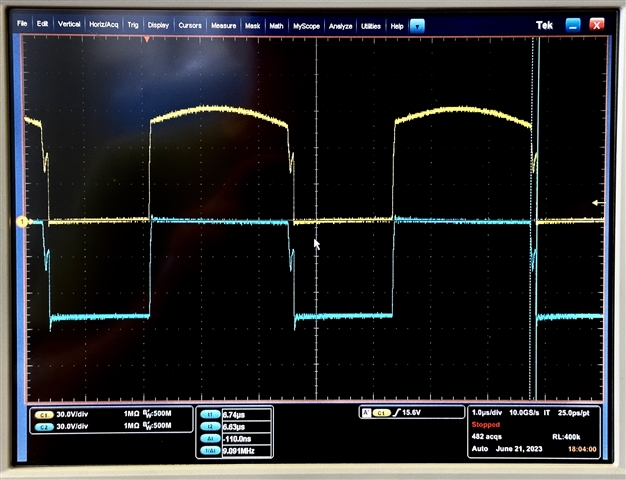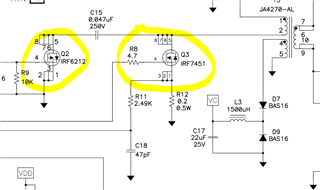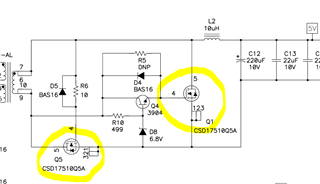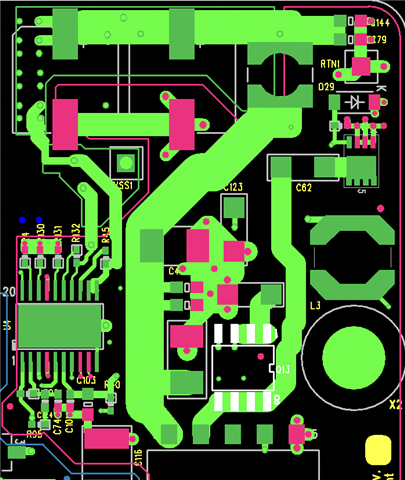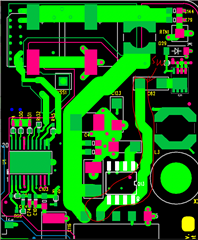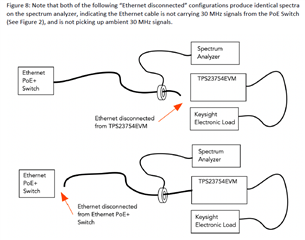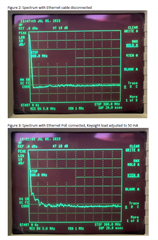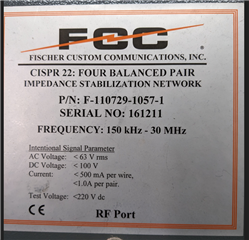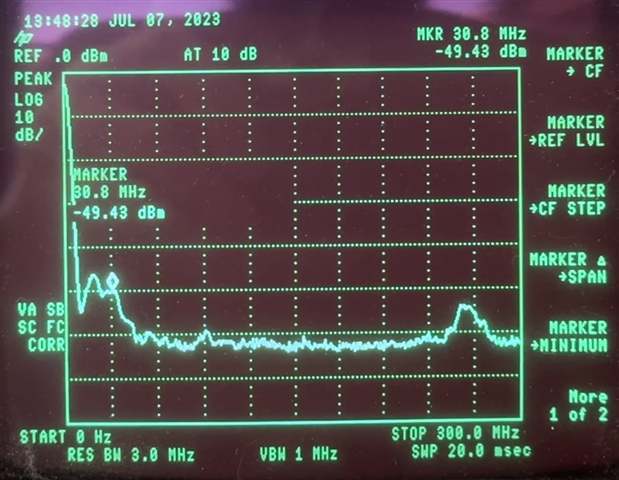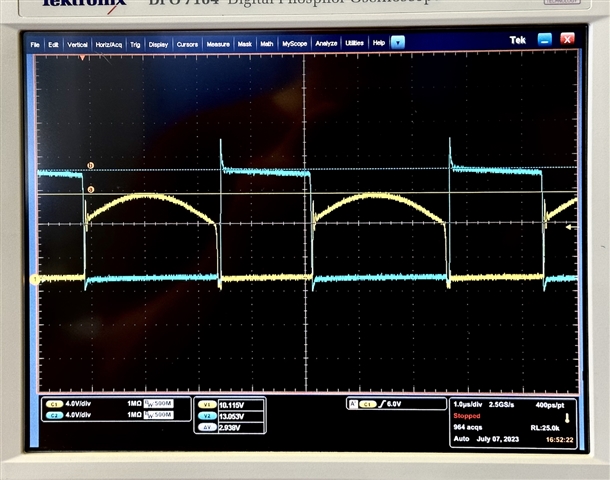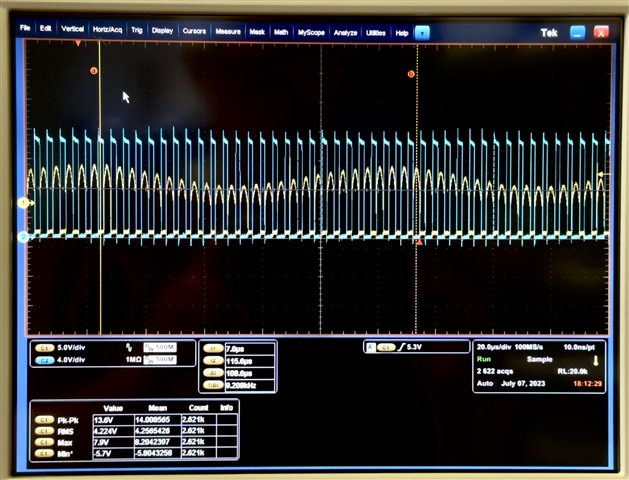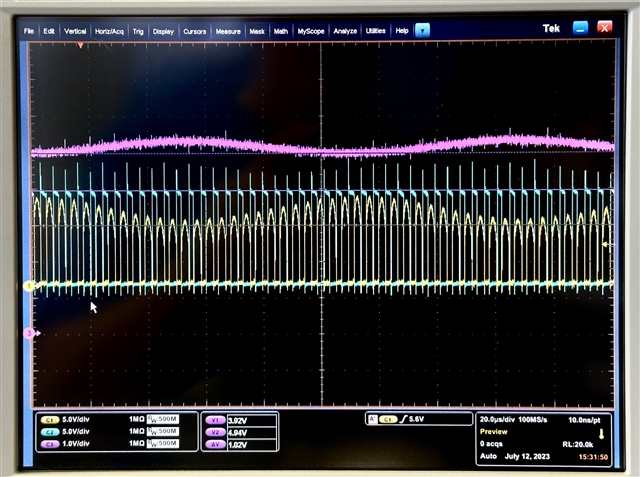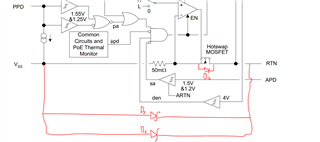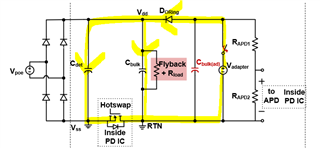Other Parts Discussed in Thread: TPS23734EVM-094, TPS23756EVM, , PMP10288, PMP9563
I designed our board based on the PMP5818 ACF design. It works, but am having trouble with EMI in the 30-50 MHz range. I've attached a scope trace of the waveforms for the main switching and clamp transistors. There doesn't appear to be any ringing that would be likely to cause 30 MHz EMI. Except possibly for that glitch on the falling edge of the waveforms. Are these waveforms you would expect on this design?
Also, none of the ACF reference designs that I've looked at on the TI website use snubbers on the main switching and clamp transistors. Are they of any use on these transistors?
Thanks